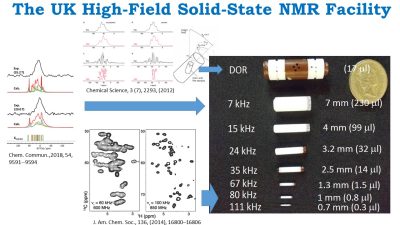Weekend Course
MR Physics & Engineering IV: Field of Dreams
Joint Annual Meeting ISMRM-ESMRMB & ISMRT 31st Annual Meeting • 07-12 May 2022 • London, UK

| Super-High Field (SHF) Magnets | |||
| 12:30 |  |
Why Go to Super-High Fields (SHF) & What Are the Challenges?
Mark Bird
The Iseult magnet has reached the limit of human MRI with traditional NbTi superconductor. Higher field will require Nb3Sn that has been used for preclinical MRI and large scale fusion magnets. Meeting all constraints of a clinical system at 14 T or higher presents new challenges. REBCO has enabled high-resolution NMR to jump from 23.5 T to 28.2 T and shows potential for NMR at 35 T and human MRI at 20 T. Using resistive materials, NMR is being done at up to 35.2 T dc with ~1 ppm resolution while 55 T is possible for short pulses.
|
|
| 12:55 | Superconducting Materials for Super-High Field NMR and MRI
Hideaki Maeda
This lecture discusses superconducting materials and related technological challenges, the potential for super-high field NMR and prospects for super-high field MRI. It firstly describes the NMR magnet's development and potentials. Secondly, the prospect and challenges in creating a super-high field MRI magnet will be presented.
|
||
| Acquisition Techniques for SHF | |||
| 13:20 | Acquisition Techniques for 1H
Lucio Frydman
|
||
| 13:45 | X-Nuclei Acquisition
Jeanine Prompers
Metabolic perturbations are a key driving factor in many diseases and measuring metabolic responses is therefore promising to provide early treatment efficacy markers. MRS measurements of X-nuclei, such as 31P, 13C and 2H, yield unique information on in vivo metabolism. However, X-nuclei have a low intrinsic sensitivity and commonly used surface coils for X-nuclei have a low penetration depth. Ultra/super-high field greatly enhances the sensitivity for X-nuclei and, together with innovative coil designs, boosts the potential of X-nuclei metabolic imaging. In this educational, we highlight major applications, and discuss recent methodological advancements and challenges of X-nuclei acquisition at ultra/super-high field. |
||
| 14:10 | Break & Meet the Teachers |
||
| Beyond 20T | |||
| 14:35 |  |
GHz NMR
Dinu Iuga
The UK High Field Solid State NMR National Research Facility provides access to 20 T (850 MHz) and 23 T (1 GHz) spectrometers and probes capable of spinning samples at the Magic Angle at very high spinning frequencies (100 kHz). Under very fast MAS, the 1H spin echo life time becomes considerably longer opening up the possibility to investigate 1H-1H proximities or to detect other atoms in vicinity to 1H. Enhanced sensitivity and enhanced resolution provided by the high magnetic fields allows for structural insights not possible at lower magnetic fields, like understanding cell wall architecture.
|
|
| 15:00 | Beyond 40T: Pulsed NMR Video Unavailable |
||
| Potential & Challenges for SHF MRI | |||
| 15:25 | Promising In-Vivo Applications for 1H & X-Nuclei
Samuel Grant
|
||
| 15:50 | SHF Safety: What Do We Know So Far?
Andrea Grant
MR safety above 7T includes both subject safety and practical considerations for researchers. In this talk I will discuss what we know about exposure to static fields above 9.4T, including human exposure at 10.5T and pre-clinical work at 16.4T. I will also discuss 6 other areas of note for safety considerations, including validation of RF coil models, acoustic noise measurements, B0 projectile risks, implants at 7T and above, occupational exposure, and practical considerations.
|
||
The International Society for Magnetic Resonance in Medicine is accredited by the Accreditation Council for Continuing Medical Education to provide continuing medical education for physicians.